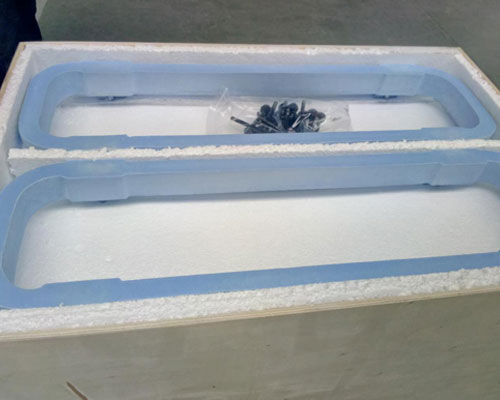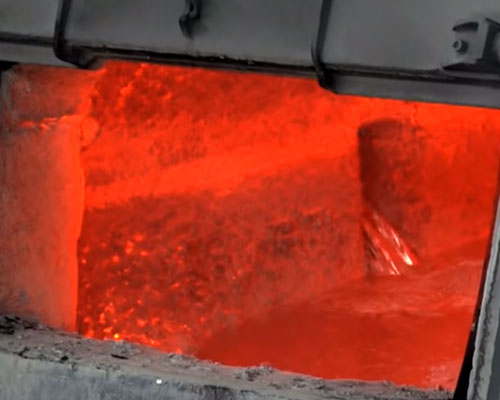The difficulty in the production of aluminum ingots for remelting is ripple control. The continuous casting machine adopts chain transmission, which has poor transmission stability and poor shock resistance. During operation, the incompletely solidified molten aluminum in the mold produces ripples due to vibration and shaking. Therefore, the common surface ripples of aluminum ingots are caused by the shaking of molten aluminum caused by slagging and casting machine vibration.
For ripples caused by slagging, it is necessary to add a slag cleaning agent to the molten aluminum in the mixing furnace to stir the slagging. Strictly follow the process, so that the slag and aluminum in the aluminum liquid are completely separated and the slag is removed to reduce the impact on the subsequent slag removal.
Try to choose a shorter casting launder for production to reduce the contact area between the aluminum liquid and the air, thereby reducing the alumina formed by surface oxidation. Try to avoid turbulent flow of molten aluminum, optimize the structure of the ship-shaped ladle, and place a slag stopper at the mouth of the ladle to avoid a large amount of oxidized slag entering the mold. Production practice has proved that the higher the casting temperature and the more aluminum slag, the greater the ripples caused during the slagging process. Control reasonable casting temperature, the less aluminum slag, the smaller the ripple caused by slagging.

The ripples caused by the shaking of the casting machine can reduce the unevenness of the running speed of the casting mold. Optimize the chain drive to reduce the impact of the chain drive on the aluminum ingot casting process, lubricate the bearings and the mold chain in time, clean up the residual aluminum remaining on the chain and track, keep the track clean, and ensure the smooth operation of the casting machine, thereby reducing the Eliminate the generation of ripples.
Strictly control the quality of aluminum ingot molds, and avoid installing molds with sand holes and unclear markings on the equipment. Inspect the mold regularly, and replace it in time when the mold has cracks or unclear marks. During the production process, auxiliary materials such as talc powder and titanium dioxide are likely to remain in the cavity of the mold, causing the fluidity of the aluminum liquid to be blocked, and the cavity of the mold is regularly cleaned.
There are many production steps of aluminum ingots for remelting, and each step affects the quality of aluminum ingots. It is necessary to strengthen the management and control of the process according to different positions, conscientiously summarize the production experience, continue to improve the process, and continuously improve the product quality.

